Knowing about various types of electric motors is never without a benefit due to the widespread use of motors from domestic to industrial applications. If you own an air conditioning system at home or operate an air compressor at an industrial plant, you are using electric motors. Therefore, if you know about the different types of electric motors, you can better understand the system you own and have better control over its operation.
Here at Linquip we have provided a convenient platform for you to find the type of electric motors you need for your application. Besides that, in this post we are trying to demystify various types of electric motors for your reference. So, stay tuned!
What Are Electric Motors?
Before knowing about different types of electric motors, it is better to start with the question of “what is an electric motor”? Well, the shortest answer is that the electric motor or just motor is an electro-mechanical device that receives electrical energy and converts it to motion or mechanical energy.
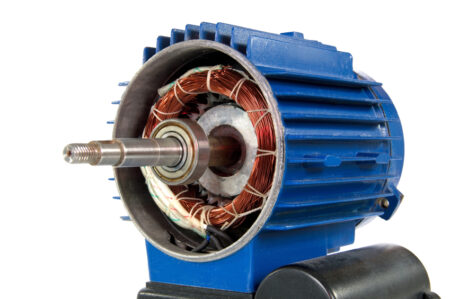
That motion is mostly of a rotational form. The flow of electrical current induces a magnetic field, and what happens in an electric motor is to produce a rotational motion perpendicular to the direction of the current and the magnetic field.
Applications of Electric Motors
Electric motors can be used for domestic applications, for example, in electrical appliances such as air conditioners, vacuum cleaners, fans, food processors, etc. which all make use of the rotational force of electric motors in their own ways, or even in toys such as remote or app-controlled toy cars or model airplanes.
Speaking of electric model vehicles, the bigger more complex versions of electric motors can be found in actual size electric cars and airplanes (well, these airplanes are still being studied to become commercially available).
Last but not the least, some types of electric motors are widely used for industrial applications such as industrial gas compressors, pumps, lifting vehicles, mixers, etc.
Ways of Electric Motor Classification
Various types of electric motors can be classified in a variety of ways. One way of classification would be based on their enclosures. We have Open Drip Proof (ODP) motors suitable for clean, dry, indoor applications, the enhanced version of which are the Weather Protected motors with WP1 or WP2 enclosure configuration. We also have Totally Enclosed Fan Cooled (TEFC), Totally Enclosed Air Over (TEAO), Totally Enclosed Forced Ventilated (TEFV), and Totally Enclosed Non-Ventilated (TENV) enclosure configurations for different types of electric motors. There are also Explosion Proof (Ex) motors used in hazardous areas with a chance of explosion due to the presence of some explosive fluids, dust, etc. in the area.
Nonetheless, electric motors are usually classified based on their power source. There are Alternating Current or AC Motors in which the current changes direction at some frequency. There are also Direct Current or DC Motors which are widely used in small scale applications due to their easy speed control.
The AC motors are further classified into single-phase and three-phase. The single-phase motor can reach a power of about 3 KW supplied from a single-phase power supply, which is the case for domestic and commercial applications. The three-phase motor, on the other hand, can produce power up to about 300 KW. These motors are the perfect choice for industrial applications.
AC Motors
As was mentioned earlier, the AC motor is one of the types of electric motors that uses current with an alternating direction. These motors are not as easily speed-controlled as DC ones; however, with a bit of power penalty, one can use AC motors with variable frequency drives to have a better speed control.
There are two widely used types of AC motors and one other less common type:
- Induction (asynchronous) motors
The induction or asynchronous motor is a mechanism that never runs at synchronous speed. This motor converts electric power into mechanical power by utilizing the electromagnetic induction phenomena. In these types of electric motors, the magnetic field rotates in the stators which induce a current in the rotor resulting in the rotation of the motor. Since the rotor rotation is induced by a magnetic field outside of it, these motors are externally excited. There are two types of induction motors based on the rotor structure: squirrel cage induction motors and phase wound induction motors.
- Synchronous motors
What happens in synchronous types of electric motors is a direct application of magnetic field to the rotor windings, which has its own drawbacks and benefits. Such internally excited motors require different protection and control requirements than asynchronous motors.
- Linear motors
There are also linear types of electric motors in which the stator and rotor are not rolled, and therefore, they do produce a linear force instead of a torque. This type of motor is commonly found in sliding doors and actuators.
Induction Motor
The induction motor is one of the types of elector motors that is probably the most widely used for industrial applications. The stator is magnetized due to its connection to the power grid, then the magnetic field induces a voltage and hence a current in the rotor windings, then the induced current in the rotor produces another magnetic field, and then the interaction between these two magnetic fields produces the rotational force or torque that drives the motor shaft.
These motors have a very simple design and robust construction with low price and easy maintenance. They also come in a wide range of power ratings are as already said the most widely used types of electric motors. Nonetheless, speed control is not easy without a variable-frequency drive which makes the motor run a with a lagging power factor.
The induction motor comes in two different types of squirrel-cage rotor induction motor and wound rotor induction motor, as mentioned earlier. Each of these motors can also be whether single-phase or three-phase. Single-phase induction motors are the less commonly used type of induction motors in the industry. It is reported that the three-phase induction motor is one of the types of electric motors that have appropriated about 70% of the market share for industrial induction motors to itself.
The wound rotor motor or slip ring motor has more winding turns, which means it has a higher induced voltage and lowers current than the squirrel-cage induction motor. They could also produce more starting torque. On the other hand, they are more complicated to manufacture due to their added number of components compared to squirrel-cage induction motors, which makes their unit cost as well as their maintenance costs considerably higher.
- The squirrel-cage rotor induction motor is made of conducting bars arranged in parallel, which are short-circuited at both ends by short-circuiting rings.
- Single-phase squirrel-cage induction motors have one stator winding, and there is always some other device getting the motor to start. They are perfect for applications that require only a few horsepowers such as for home appliances. Thus far, they have actually been the most widely used for home appliances.
- Three-phase squirrel-cage induction motors can handle high power demands; their horsepower rating could go from very little to hundreds of horsepower. They are also self-starting. Almost 90% of three-phase induction motors used in the industry such as for pumps, compressors, and fans are of the squirrel cage types.
- The wound rotor induction motor has a distributed winding that is double-layered. The reason for the name is that the rotor of these types of electric motors is wound for as many poles as the stator. Due to their higher costs, wound rotor motors are considered for situations where high starting torque is required.
- Single-phase wound rotor motors are suitable for rather higher power ratings than their squirrel-cage counterparts. They can start quite comfortably, and can accelerate very well. Some machines bigger than home appliances could make use of these types of electric motors such as in farming, small air compressors, mining, etc.
- Three-phase wound rotor motors take only 10% of the three-phase types of induction motors seen in industry, but have the good characteristics of their squirrel-cage brothers.
see here for a video on how the induction motor works.
Synchronous Motors
Contrary to induction motors, synchronous motors are basically not self-starting, despite some self-exciting configurations that can be found for some small size applications. Production of the rotor’s magnetic field for these types of electric motors does not depend on the current, and the rate of rotation for a synchronous motor is pegged to the line frequency. In other words, the rotation of the shaft for synchronous types of electric motors is at a synchronized speed with the frequency of the supply current.
What makes them interesting for industrial sizes with higher power demands is their high efficiency of turning AC power into work and their ability of power factor correction. It means they can operate at a unity power factor that suggests equal real power of the load to the apparent power of the circuit.
Synchronous AC motors come in two types: non-excited and DC-excited. The non-excited synchronous types of electric motors are further classified into three categories of the permanent magnet, reluctance, and hysteresis types.
Non-excited Synchronous Motors
Non-excited synchronous types of electric motors are designed in a way to have their rotor follow the synchronized rotating field in different steps, which would produce a constant field. When the rotor of non-excited synchronous motors rotates, it interacts with the stator. The interaction between the stator field poles and rotor results in the rotor becoming electromagnetic with the north and south poles. The rotor of these types of electric motors has a high retentivity, which means it has a strong ability to retain or resist magnetization.
As already mentioned, there are three types of non-excited synchronous motors, namely permanent magnet, reluctance, and hysteresis synchronous motors. Let us discuss them further in the following.
Permanent magnet
In permanent magnet synchronous types of electric motors, the steel rotor is attached to a permanent magnet such as a neodymium magnet that provides the uninterrupted continuous magnetic field. This is realized by the interaction of the rotor with the rotating field produced by the stator that has the alternating current supply connected to it. The permanent of rotor is locked to the rotating field of the stator, which induces a synchronous speed of rotation for the rotor. This design is similar to brushless DC motors that will be discussed later.
For starting of these types of electric motors, you need to have a variable-frequency source because the rotor for this design is a permanent magnet producing a constant magnetic field. The speed control is done using direct torque control and field-oriented control.
Reluctance
The rotor for reluctance synchronous types of electric motors, which do not have any windings, is made of ferromagnetic material on which non-permanent magnetic poles are induced. The reason for the name is that it generates torque using magnetic reluctance, i.e. which is a measure for the resistance or opposition of the material to magnetic flux.
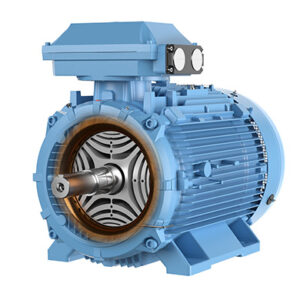
The number of rotor poles of reluctance synchronous motors is equal to the number of stator poles. The number of poles is always even and typically equal to four or six. The number of rotor poles is, however, less than the number of stator poles to prevent torque ripple. Torque ripple is a periodic increase and decrease of torque produced by the motor shaft, which is not a favorable thing.
As a stator rotor is energized, a torque is exerted on the rotor in the direction of reducing magnetic reluctance. This torque will pull the nearest rotor pull so that it would be aligned with the stator field to a position of less reluctance. Therefore, in order to maintain rotation, the stator pole needs to keep escaping the rotor pole by rotating in advance of the rotor poles.
Hysteresis
For hysteresis synchronous motors, as the stator magnetic field rotates, the rotor experiences a reversing magnetic field. The reason for this phenomenon is that the cylindrical rotor of these types of electric motors is made of high-coercivity material. This means that once the rotor is magnetized in some direction, you cannot easily reverse its direction without applying a large reverse magnetic field.
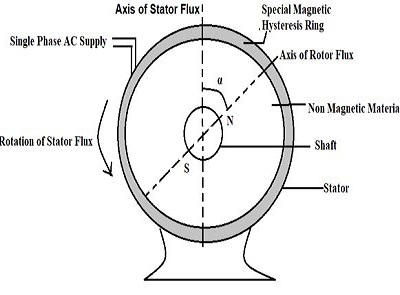
The reversing magnetic field experienced by each small volume of the rotor due to stator magnetic field rotation will continue until the synchronous speed is reached. This brings us to the advantage of hysteresis synchronous motors that can produce consistent torque until reaching the synchronous speed without torque ripples. Another point about these types of motors is that despite there is normally some squirrel-cage winding to help start the motor, but the motor can self-start due to the fact that the rotor motion is only dependent on phase lag between stator and rotor magnetic fields.
DC-excited Synchronous Motors
The rotor of these types of electric motors is excited with the help of an external DC source that produces the magnetic flux required to put the rotor into motion. This can be done whether by a separate DC source or one that is directly connected to the motor shaft.
You can watch the video here to see how synchronous motors work.
Linear
Linear motors are one of the AC types of electric motors producing linear force instead of torque. They are similar to the ones already discussed earlier except that their rotors and stators are unrolled. They are widely used in applications such as electric trains, actuators such as ones used in sliding doors, etc.
This video will show you how such motors work.
DC Motors
In DC types of electric motors, DC electrical energy is turned into mechanical energy. DC motors can be whether self-excited or separately excited. However, the self-excited DC motors are probably more interesting if you can use them for your application.
DC motors can also be classified based on whether they are brushed DC (BDC) or brushless DC (BLDC). Brushed DC motors are cheap and simple to design and manufacture; however, BLDC motors are complex and pricy. In general, small and insensitive applications such as appliances and car power windows and seats could use BDC motors, whereas applications such as HVAC and refrigeration, car electric motors, and other similar industrial systems would work with BLDC.
Brushed DC
Brushed DC types of electric motors are internally commutated which means the torque is directly produced from the DC power supplied with the help of stationary permanent magnets or electromagnets and rotating electromagnets.
They are quite inexpensive and highly reliable. You can easily control their speeds using a simple two-wire system, although there are some fixed-speed designs for which there is no speed control.
You can also find some disadvantages in brushed DC motors such as requiring periodic maintenance specifically imposed by the brushes and low lifetime for high demanding jobs for which whether the torque or speed is high. Another important issue is their limited speed due to the brushes and generation electromagnetic interference (EMI) by brush arcing.
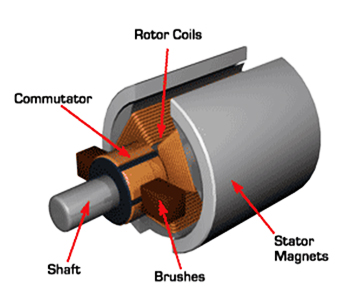
Shunt Wound
The field coils or windings of shunt wound brushed DC motors are connected in parallel with the armature; hence the name for these types of electric motors. In this configuration of windings, the supplied current will be distributed between the shunt armature and field windings. Speed regulation is very easy with shunt wound BDC motors.
When the load is applied to shunt wound brushed DC motors, the speed tends to decrease, but the net voltage would be increase in this situation. When the net voltage increases, the current of the armature increases, and that means there will be some extra torque generated, which compensates for the speed decrease due to applying the load, making these types of electric motors constant speed devices.
All this means that you would probably want to consider such a motor if you had a low starting torque requirement as well as good speed regulation.
Series Wound
If instead of connecting the armature windings and field windings in series instead of in parallel, then you get a series-wound brushed DC motor. It is clear that the current in both the field and armature windings would be equal for this design. They would need a significant amount of current, but the torque they produce is very high especially at startup.
This design, however, is not so good with speed regulation. The reason is that despite the increased voltage due to loading the motor will increase the current to rise, but the magnetic field would eventually be saturated, which means that the flux between the armature and stator will not rise fast enough, which means not enough torque will be generated to bring the speed back to it previous conditions.
You can say that you could consider the types of electric motors when you need a high startup torque, but do not care about speed regulation that much.
Compound Wound
What if you needed a BDC that has both high starting torque, as well as good speed control? Well, there is a solution for that too: compound wound brushed DC motors. Compound wound motors are a “hybrid species” of shunt wound and series-wound brushed DC motors. In these types of electric motors, there is a field winding in series with the armature winding, and another field winding shunt with the armature winding.
There is short-shunt configuration and a long configuration for compound wound BDC motors. If the shunt field was only in parallel with the armature it would be a short-shunt configuration, but if the shunt field was in parallel with the series of armature and series field it would be a long-shunt compound-wound BDF.
You can have the polarity of shunt field matching the series field’s polarity, which makes a cumulative compound wound BDC. This is a motor with high starting torque and good speed regulation. You can also have a shunt field polarity in opposition to the series field, which makes a differential compound wound motor.
Permanent Magnet
In a permanent magnet brushed DC motor, the armature is surrounded by permanent magnets attached to the internal surface of the cylindrical stator of these types of electric motors. The magnets are installed in a manner that opposite poles of adjacent magnets would face the armature. The armature, which is current carrying conductor, would therefore experience a mechanical force exerted on it from the magnetic field of this arrangement of permanent magnets and rotate in its direction.
Servomotor
Servomotors might not be really one of the types of electric motors, and probably are a category of their own, but since the simplest small ones use permanent magnet BDC motors along with a closed-loop control system, we decided to mention them here as well. Servomotors are mechanical devices or actuators that are quite handy when it comes to precise position control, velocity control or acceleration control. They consist of a DC motor, position sensor, and a controller.
Brushless DC
You have probably noticed by far that the brushes and their interaction with the mechanical commutator of BDC motors are the reasons for brushless DC electric motors. Well, the brushes wear and require maintenance and replacement, and the brushes make sparks that are dangerous for places where there is a chance of explosion.
Brushless DC motors are commuted electronically giving them a longer life, better speed vs torque characteristics, high efficiency, better dynamic response and higher speed changes, and noiseless operation.
These types of electric motors can be used for both varying load and fixed load applications as well as positioning applications, and they are gaining popularity in the market.
For a video comparing brushed DC motors with brushless DC motors and criteria for selecting between them, see here.
Conclusion
Thus, this was all about types of electric motors. We attempted to present a simple guide about these types of motor. At present, there are different and flexible. The purpose of the motor is whenever “a motion control is required”, this is the best choice. The motor must support the use and overall act of the system. Here is a great chance, if there is more needed to know about types of electric motors, feel free to register at Linquip. Our experts will be looking forward to receiving your questions and answering them enthusiastically.
Read More In Linquip
- A Full Explanation on Types of Servo Motors
- Efficiency of Electric Motor: A Simple Guide
- How Does a Brushless Motor Work: A Full Explained Guide
- What is the Principle of Electric Motor: The Concise Answer
- The Simple Guide to Motor Efficiency: What It is and What to Do
- 10 Types of CNC Machine + Applications & PDF
- Types of Synchronous Motors: A Full Description
- Universal Motor: a Simple Guide to Construction, Types and Working
- Synchronous Motors: Definition, Working Principle, Types, and Applications
- 4 Different DC Motor Types and Their Applications
- Types of Induction Motor: A Concise and Useful Guild
- What is AC Motor ? Types, Principles and Constructions

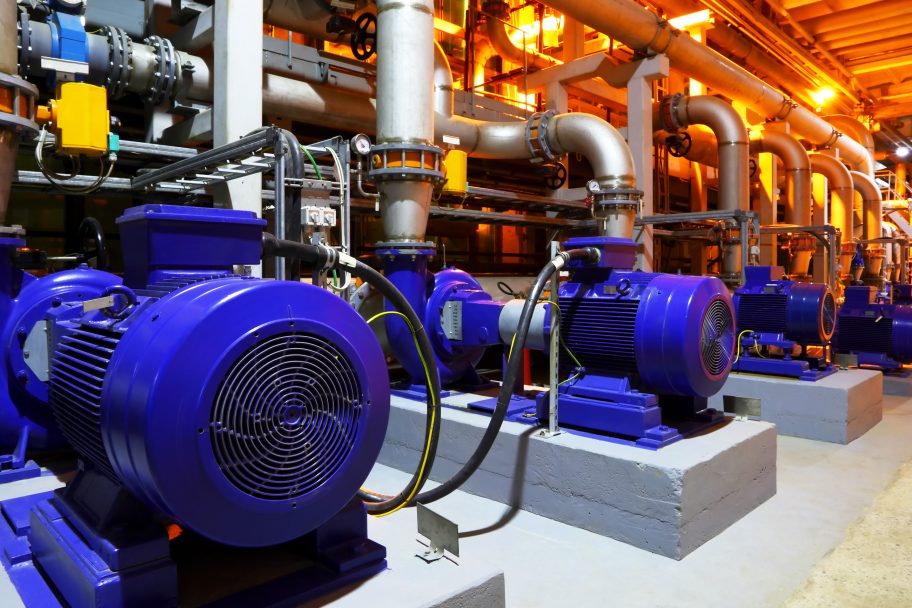
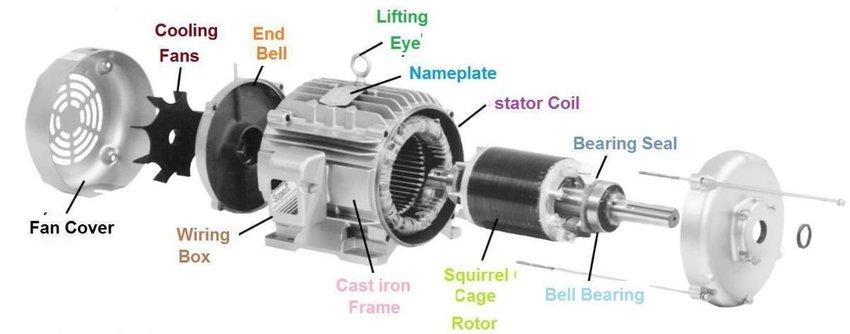
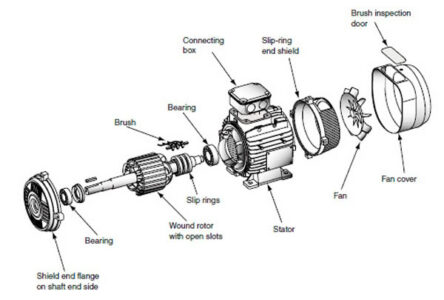
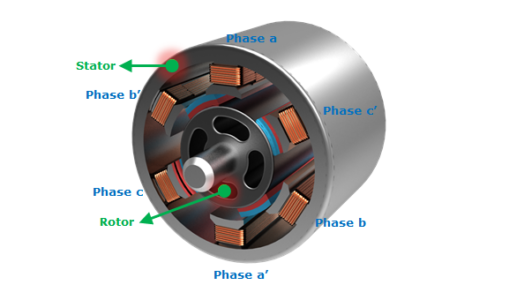
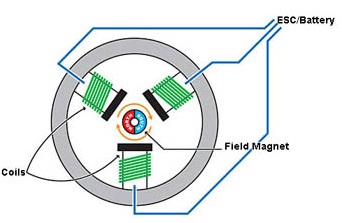


Nice
what happened to the pipe cage motors, which was invented in Hungary around 1875 and the patent was bought by Brook Motor UK?